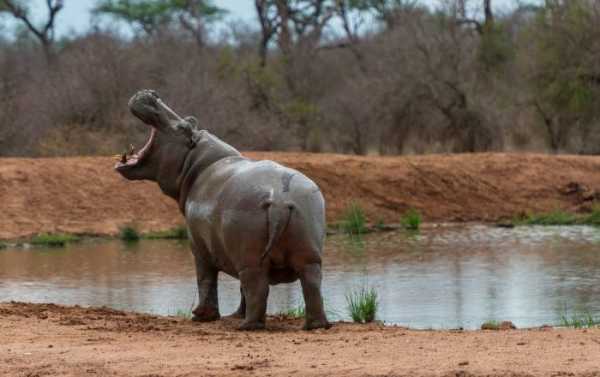
Notorious drug kingpin Pablo Escobar, who was shot dead in late 1993, kept four hippos at his private menagerie at Hacienda Nápoles in Colombia. Left to roam free after his death, the animals have since grown in numbers, with scientists and locals branding them as pests that shouldn’t be running wild.
Infamous Colombian drug lord Pablo Escobar, shot dead in late 1993, could have helped save hippos from extinction, claims a new study, entitled “Introduced herbivores restore Late Pleistocene ecological functions”.
After Escobar was tracked down and killed, most of the animals he kept in his private menagerie in Colombia were relocated to public zoos, but four of his pet hippos were allowed to stay at the abandoned estate due to their cited aggressive nature.
The animals quickly embraced their newfound freedom and started breeding rapidly.
According to David Echeverri López, biologist with the Forests and Biodiversity Group of Cornare, there are from 80 to 100 hippos in the area, and both locals and scientists had come to perceive them as pests, as they made their way into Colombia’s rivers.
Now, the research discovered that introductions back into the wild, as is the case with the hippos, can be instrumental in restoring important traits that had been lost for thousands of years.
The new study was based on worldwide analysis that compared ecological traits of “introduced herbivores”, such as Escobar’s hippos, to those of the past.
The results showed that 64 per cent of introduced herbivores, like the aforementioned hippos, are more similar to extinct species than to local native species, rendering them invaluable to preservation efforts.
The authors of the research hailed the broader biodiversity benefits of such reintroduced herbivores.
Claiming they render today’s world more similar to “pre-extinction” days, senior author of the study Dr Arian Wallach said:
Over 100,000 years human civilization has witnessed the extinction of several large mammal species, with efforts being made to reintroduce numerous species and achieve a “rewilding” of certain areas.
Previously, said the study’s lead author Erick Lundgren, a Ph.D. student at The University of Technology Sydney (UTS), Australia, there had been suggestions that introduced herbivores might help restore “lost ecological function”. However, no efforts were made to evaluate this in depth.

Hippo and Hyenas
The team compared a number of key ecological traits of herbivore species from before the Late Pleistocene extinctions to the present day. The experts calculated body size, diet and habitat to compare species similar in the perceived effect they have on ecosystems, albeit they might not be necessarily closely related to each other.
According to the authors of the study, the results feed into broadening the perspective on the more evolutionarily relevant past and offers insights into how introduced species affect the world.
Sourse: sputniknews.com






